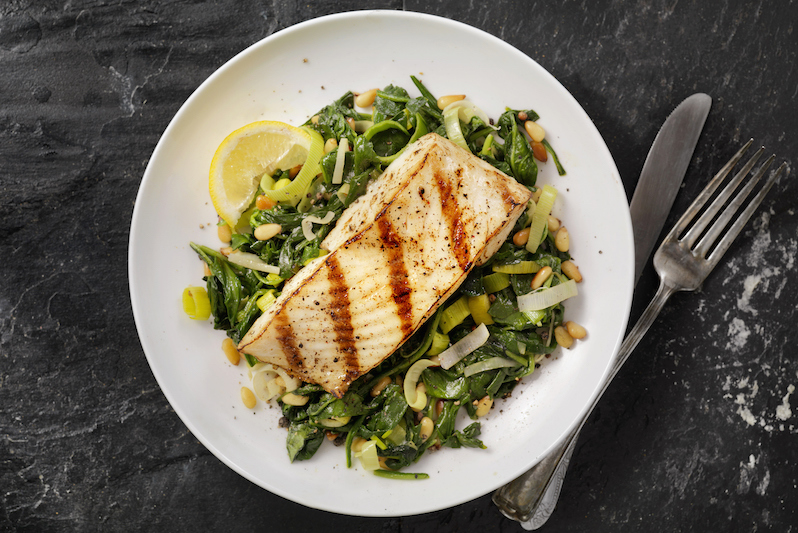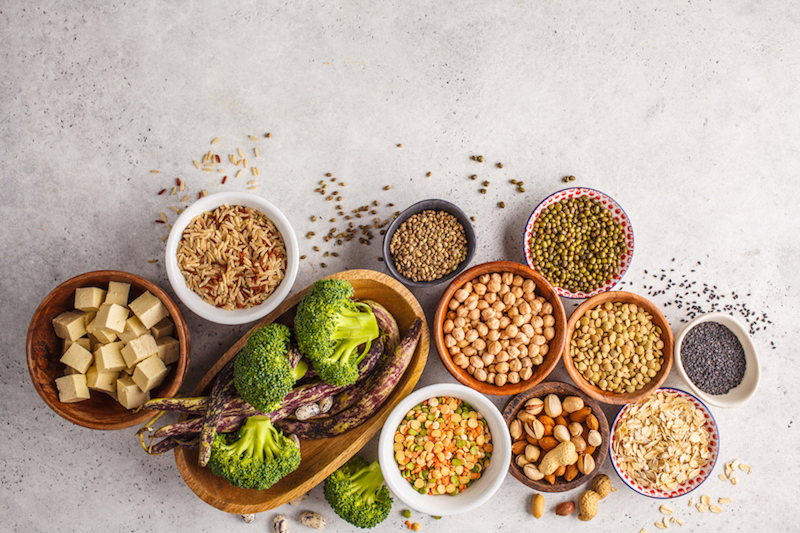Protein is an essential part of a healthy diet, especially for older women. It helps maintain weight, preserve muscle, and fight disease. But how much do women need? What’s the best way to get it? And what happens if we don’t get enough?
Read on to learn how much you really need, and a few of the best ways to boost protein intake.
How Much Protein Do You Need?
The recommended dietary allowance of protein is 0.36 grams per pound of bodyweight. The Academy of Nutrition and Dietetics, Dietitians of Canada, and the American College of Sports Medicine recommends between 0.54 and 0.9 grams per pound of bodyweight for athletes.
So which is it? If you’re in good health and mostly sedentary, your needs are likely closer to 0.36 grams per pound. That’s 50.4 grams per day if you weigh 140 pounds. Since endurance workouts can break down muscle protein quickly, opt for more if you exercise regularly. The same goes for anyone recovering from an illness, pregnant, or under a lot of stress. Talk to your doctor about your ideal intake.
What Happens if You Don’t Get Enough?
Most Americans take in about 15 percent of their calories from protein, which is within the recommended daily requirements. However, there are a few ways to tell if you are not getting enough.
- Swelling. Since protein can prevent fluid from building up in your tissues, a lack can lead to swelling in your abdomen, feet, legs, and hands.
- Mood changes. A lack of protein can hurt your body’s ability to make neurotransmitters, which can lead to depression and anxiety.
- Hair, skin, and nail problems. The elastin, collagen, and keratin in your hair, skin, and nails are made up of protein. Not enough can cause brittle hair, dry skin, and ridges in your nails.
- Fatigue and weakness. For older women, a lack can lead to a loss of muscle mass, slower metabolism, and failing strength and balance.
- Slow-healing injuries. Protein is found in the connective tissues of your skin. Without enough, your body heals sprains, cuts, and scrapes more slowly.
- More frequent illness. Without the essential nutrients from a well-balanced diet, your body cannot fight off bacteria and viral infections as well as it otherwise could.
The Best Sources
High-quality beef, chicken, meat, fish, yogurt, cheese, and eggs all contain protein, but so do legumes, nuts, whole grains, and a whole host of vegetables.
Tempeh, tofu, and other foods derived from soybeans can pack up to 20 grams per cup, while 2 cups of kidney beans contain about 26 grams. Peas are also a great source, with 7.9 grams (or the same as a cup of milk).
A cup of cooked lentils has 18 grams of protein, which is more than a hamburger (and lentils have more fiber, vitamins, and minerals). One cup of black beans has 15 grams — more than a chicken drumstick. A serving of almonds has the same amount as an egg (6 grams). Spinach, asparagus, broccoli, and Brussels are among the top protein-packing green vegetables.
Boost Your Intake
Some of the easiest ways to get a little more protein in your day:
- Mix a couple of tablespoons of plain Greek yogurt into your oatmeal in the morning.
- Add a half cup of beans to your soup or salad at lunch.
- Toss a couple of tablespoons of hemp seeds into your soup or salad at lunch.
- Have a handful of nuts or some broccoli with hummus in the afternoon.
- Double up on dark leafy greens and cruciferous vegetables at dinner.
- Try a protein supplement any time.
To learn more about protein and aging, read Why Protein Is Vital for Maintaining a Healthy Weight.
Photos: Lauri Patterson, Vaaseenaa

